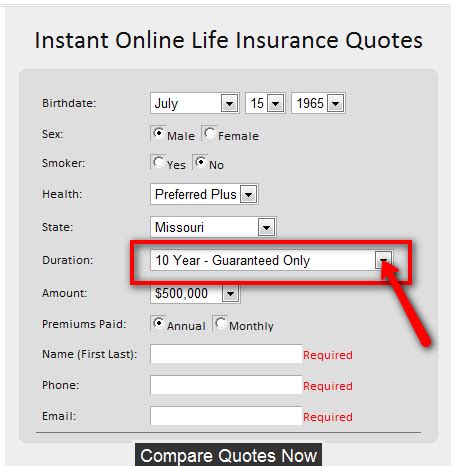Pay As You Drive Insurance

In the world of automotive insurance, the concept of "Pay As You Drive" (PAYD) has revolutionized the way drivers are insured, offering a fresh and innovative approach to traditional coverage plans. This unique insurance model is not only tailored to individual driving behaviors but also has the potential to reduce costs and environmental impacts, making it a topic of great interest in the insurance industry and among environmentally conscious consumers.
PAYD insurance, also known as usage-based insurance or pay-as-you-go insurance, is a pricing model that calculates premiums based on actual vehicle usage. This differs significantly from conventional insurance plans, which typically base premiums on a combination of factors like the driver's age, gender, driving record, and the type of vehicle. With PAYD, the focus shifts to how much, when, and where a vehicle is driven, providing a more accurate and personalized assessment of risk.
Understanding the Mechanics of Pay As You Drive Insurance

PAYD insurance operates on the principle of real-time data collection and analysis. Insurance providers equip vehicles with telematics devices or use smartphone apps to gather data on driving behavior. This data includes information such as miles driven, time of day, location, and driving style, including acceleration, braking, and cornering.
The data collected is then used to determine the insurance premium. For instance, drivers who tend to drive fewer miles, avoid peak hours, and exhibit safe driving habits might qualify for significantly lower premiums. On the other hand, those who drive frequently during high-risk periods or engage in risky driving behaviors may see their premiums increase.
Data Collection Methods
Telematics devices are the primary tools used for data collection in PAYD insurance. These devices are installed in vehicles and can record a wide range of information, from the vehicle’s speed and location to how abruptly it stops or turns. Some advanced telematics systems can even monitor the driver’s behavior, such as whether they are distracted by their phone while driving.
In recent years, smartphone apps have emerged as an alternative data collection method. These apps use the phone's GPS and motion sensors to track driving behavior. While this method can be more cost-effective for insurance companies, it may not provide as comprehensive or accurate data as dedicated telematics devices.
| Data Collection Method | Pros | Cons |
|---|---|---|
| Telematics Devices | More accurate data, can monitor a wide range of behaviors | Costly to install and maintain, may require professional installation |
| Smartphone Apps | Cost-effective, easily accessible for most drivers | May not provide as detailed or accurate data, relies on driver consent and participation |

Premium Calculation
The premium calculation process in PAYD insurance is intricate and involves various factors. Firstly, the data collected is used to assign a risk score to the driver. This score takes into account not only the miles driven but also the time of day and location, which can indicate higher or lower risk levels. For instance, driving at night or in high-risk areas might result in a higher risk score.
Secondly, the insurance provider will consider the driver's individual circumstances and the type of vehicle. This includes factors such as the driver's age, gender, driving record, and the make and model of the vehicle. These factors can significantly influence the premium, even within the PAYD model.
Finally, the insurance provider will apply its proprietary algorithm to calculate the premium. This algorithm takes into account the risk score, individual circumstances, and vehicle type, along with other factors like the local traffic conditions and accident rates. The result is a premium that is tailored to the individual driver's risk profile.
The Benefits of Pay As You Drive Insurance

PAYD insurance offers a range of benefits that make it an attractive option for both drivers and insurance providers.
Cost Savings for Safe and Low-Mileage Drivers
One of the most significant advantages of PAYD insurance is the potential for cost savings. Drivers who drive fewer miles, avoid peak hours, and exhibit safe driving behaviors can expect to pay lower premiums. This is especially beneficial for individuals who don’t drive frequently, such as retirees or those who work from home.
For instance, let's consider a hypothetical case study. Driver A, a retired individual who lives in a suburban area, drives an average of 5,000 miles per year, primarily during off-peak hours. With a PAYD insurance plan, they might expect to pay significantly less than Driver B, who commutes 20,000 miles per year in a major city during rush hour.
Encouraging Safe Driving Habits
PAYD insurance has the potential to encourage safer driving behaviors. Since premiums are directly linked to driving habits, drivers have a financial incentive to drive more cautiously and avoid high-risk behaviors. This not only reduces the risk of accidents but also contributes to a safer road environment for everyone.
Furthermore, the real-time feedback provided by telematics devices or smartphone apps can help drivers improve their driving skills. For example, if a driver consistently receives high-risk scores due to abrupt braking, they may adjust their driving style to avoid sudden stops, thereby improving their safety on the road and potentially reducing their insurance premiums.
Reducing Environmental Impact
PAYD insurance can also contribute to environmental sustainability. By encouraging drivers to reduce their mileage and avoid peak hours, PAYD insurance plans can help lower vehicle emissions and reduce traffic congestion. This is particularly beneficial in urban areas, where traffic congestion is a major contributor to air pollution and greenhouse gas emissions.
In addition, PAYD insurance can promote the use of electric vehicles (EVs). Since EVs tend to be more expensive to insure due to their higher repair and replacement costs, PAYD insurance can help offset these costs by offering lower premiums for drivers who use their EVs less frequently or during off-peak hours.
Challenges and Considerations of Pay As You Drive Insurance
While PAYD insurance offers numerous benefits, it also presents certain challenges and considerations that drivers and insurance providers should be aware of.
Data Privacy and Security Concerns
The extensive data collection involved in PAYD insurance raises concerns about data privacy and security. Drivers may be hesitant to share their personal driving data, especially if they feel it could be misused or sold to third parties. Insurance providers must ensure that they have robust data protection measures in place and that drivers understand how their data is being used and protected.
Additionally, the collection and storage of such vast amounts of data require significant technological infrastructure. Insurance providers must invest in secure data storage solutions and robust cybersecurity measures to protect against data breaches and cyber attacks.
Potential for Manipulation and Gaming the System
There is a risk that some drivers may try to manipulate the system to their advantage. For instance, a driver might intentionally drive less or during off-peak hours to lower their premiums. While this behavior is not inherently malicious, it can lead to inaccurate risk assessments and potentially unfair pricing for other drivers.
Insurance providers must implement measures to detect and prevent such behaviors. This can include regular audits of driving data, cross-referencing data from multiple sources, and implementing advanced analytics to identify suspicious patterns.
Impact on High-Risk Drivers
PAYD insurance may not be as beneficial for high-risk drivers, such as those with a history of accidents or moving violations. These drivers may find that their premiums increase significantly under a PAYD plan, as their driving behaviors are likely to be classified as high-risk. This could potentially make insurance unaffordable for these drivers or lead to situations where they are unable to find adequate coverage.
Insurance providers should have strategies in place to support high-risk drivers. This could include offering counseling or driver improvement courses to help these drivers improve their driving skills and reduce their risk profile.
The Future of Pay As You Drive Insurance
PAYD insurance is still a relatively new concept, but it has the potential to revolutionize the insurance industry and the way we perceive automotive insurance. As technology advances and more drivers become familiar with the concept, we can expect to see further innovation and refinement in PAYD insurance models.
Advancements in Telematics and Data Analysis
The field of telematics is rapidly evolving, with new technologies offering more accurate and detailed data collection. This includes advanced GPS systems, motion sensors, and even machine learning algorithms that can analyze driving behavior in real time. These advancements will enable insurance providers to more precisely assess risk and offer more tailored insurance plans.
Furthermore, improvements in data analysis techniques will allow insurance providers to extract more insights from driving data. This could include identifying patterns in driving behavior that indicate a higher risk of accidents, or understanding how different driving styles affect vehicle maintenance and repair costs.
Integration with Autonomous Vehicles
As autonomous vehicles (AVs) become more prevalent, PAYD insurance will need to adapt to accommodate this new technology. AVs have the potential to significantly reduce accidents and traffic congestion, which could lead to lower insurance premiums. However, the unique risks associated with AVs, such as software failures or hacking, will also need to be factored into insurance models.
PAYD insurance could play a crucial role in the transition to AVs. By offering lower premiums for drivers who use AV technology, insurance providers can incentivize the adoption of this safer technology. At the same time, they will need to develop new risk assessment models that take into account the unique characteristics and risks of AVs.
Potential for Personalized Insurance Plans
PAYD insurance, with its focus on individual driving behavior, has the potential to pave the way for truly personalized insurance plans. By analyzing a driver’s unique patterns and behaviors, insurance providers could offer plans that are tailored to the individual’s needs and risk profile.
For example, a driver who primarily uses their vehicle for short, local trips might benefit from a plan that offers lower premiums for low-mileage driving within a specific geographical area. Conversely, a driver who frequently takes long-distance trips might benefit from a plan that offers discounts for driving on certain highways or during off-peak hours.
In Conclusion
PAYD insurance represents a significant shift in the automotive insurance landscape, offering a more personalized and dynamic approach to coverage. While it presents certain challenges and considerations, the potential benefits – including cost savings, safer driving behaviors, and reduced environmental impact – make it an exciting development in the insurance industry.
As we move towards a future where technology and data play an increasingly central role, PAYD insurance will continue to evolve, offering more accurate risk assessments and personalized insurance plans. This evolution will not only benefit drivers and insurance providers but also contribute to a safer and more sustainable transportation system.
How does Pay As You Drive insurance affect young or new drivers?
+Young or new drivers are often considered high-risk by traditional insurance models due to their lack of driving experience. However, PAYD insurance can provide these drivers with an opportunity to demonstrate their safe driving habits and potentially lower their premiums. By encouraging safer driving behaviors and providing real-time feedback, PAYD insurance can help young drivers improve their skills and reduce their insurance costs over time.
What happens if my driving habits change significantly under a PAYD insurance plan?
+If your driving habits change significantly, it’s likely that your insurance premiums will also change. For instance, if you start driving more frequently or during peak hours, your premiums may increase. Conversely, if you reduce your mileage or adopt safer driving behaviors, your premiums could decrease. It’s important to regularly review your driving data and insurance plan to ensure it still aligns with your current driving habits and needs.
Are there any disadvantages to PAYD insurance for drivers who already have a good driving record and low mileage?
+For drivers who already have a good driving record and low mileage, PAYD insurance may not offer significant additional benefits. These drivers may already be paying relatively low premiums under traditional insurance models. However, PAYD insurance can still provide these drivers with the opportunity to further reduce their premiums by continuing to exhibit safe driving behaviors and driving less frequently.



